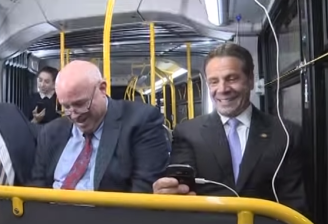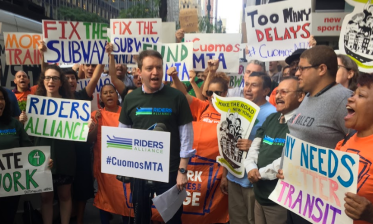A Message to Cuomo: Good Subway Service Matters More Than Mega-Projects

Over the holidays, Governor Cuomo went on a publicity tour for three new subway stations on Second Avenue. Millions of New Yorkers, meanwhile, continued to squeeze onto crowded platforms and deal with ever-more-frequent train delays. This weekend advocates put pressure on Cuomo to pay more attention to the basics — providing reliable subway service throughout the system.
According to MTA metrics [PDF], the number of weekday subway delays per month jumped 332 percent in four years, increasing from 18,255 in November 2012 to 60,274 in November 2016, the Riders Alliance reports. But instead of addressing faltering subway service, Cuomo has made cash-less bridge tolls, a shinier Penn Station, and AirTrain boondoggles the cornerstones of his transportation agenda.
On Second Avenue, Cuomo personally intervened to get the project ready for service by January 1. Now that the cameras are gone and riders are confronted with higher fares and deteriorating service, the governor has moved on.
Riders Alliance members gathered at the Chambers Street J train platform yesterday to call on Cuomo to devote the same urgency to fixing daily subway service. “We need that same kind of leadership for the whole system, not just big, splashy projects,” said Riders Alliance organizer Masha Burina.

While subway service becomes less reliable, the price of a MetroCard is set to rise and Cuomo’s budgeting practices practically guarantee a steady diet of fare hikes in the future.
MTA debt has grown significantly since Cuomo took office in 2011, meaning more of the MTA’s budget is consumed by debt service, which leads to higher fares. Last year, instead of following through on a promise to devote direct state funding to the MTA capital program, Cuomo raised the MTA debt ceiling, setting the stage for more borrowing and more fare hikes.


